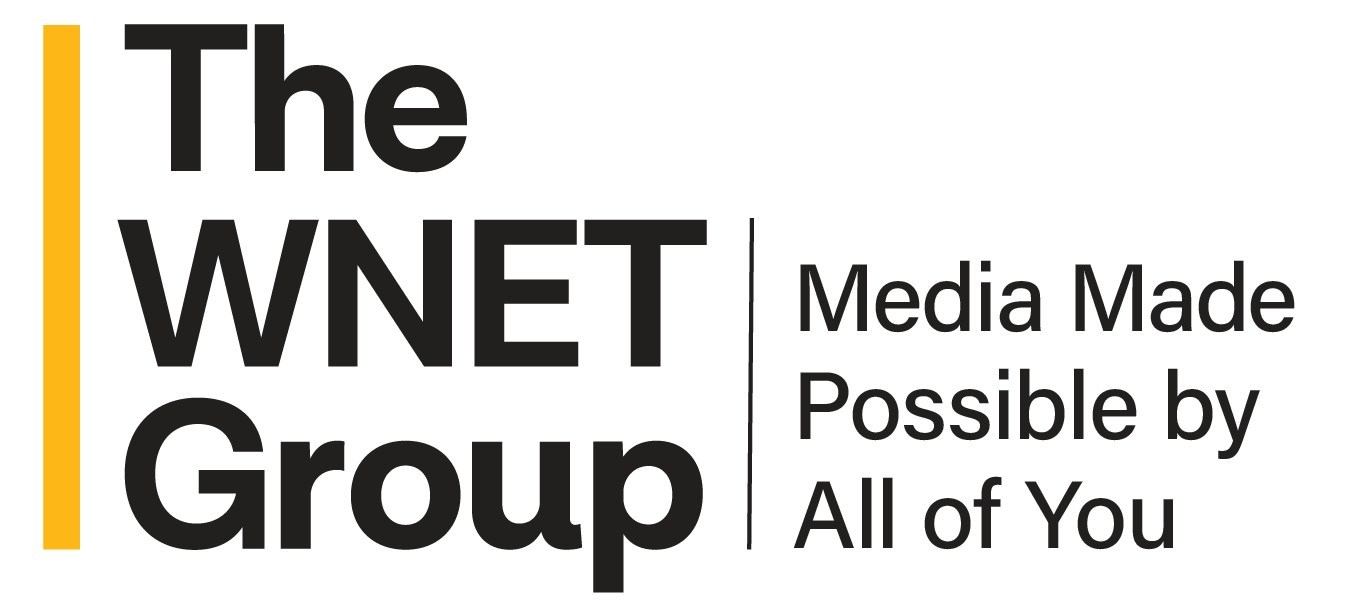File-Based News Production Arrives
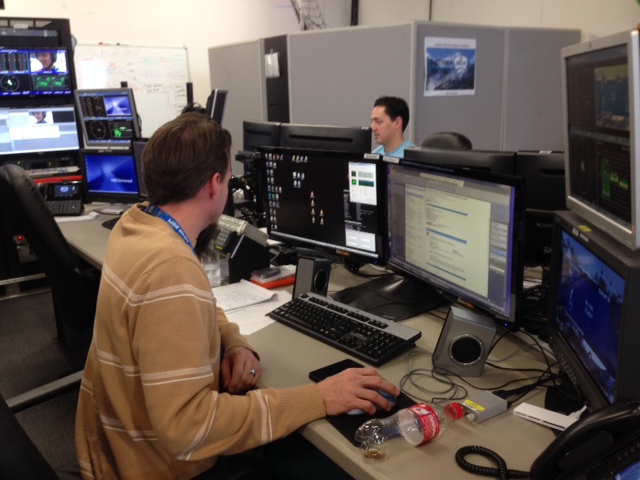
NBC News Engineer Brian Wamsley at a Xedio Dispatcher station.
SOCHI, RUSSIA— NBC Olympics wasn’t the only part of the Peacock Network that relied on big workflow advances in Sochi.
NBC News—supporting the significant production needs of The Today Show, Brian Williams, Nightly News and more—engineered and deployed a new multi-vendor solution for the first time at a big event.
On the front end, either Adobe Prelude or EVS’ Xedio Dispatcher was used to organize the scores of files that might arrive from an ENG shoot in to a single master clip or a couple of master clips, depending on how the producer wants the content organized, said David Jackson, director of bureau editing operations for NBC News.
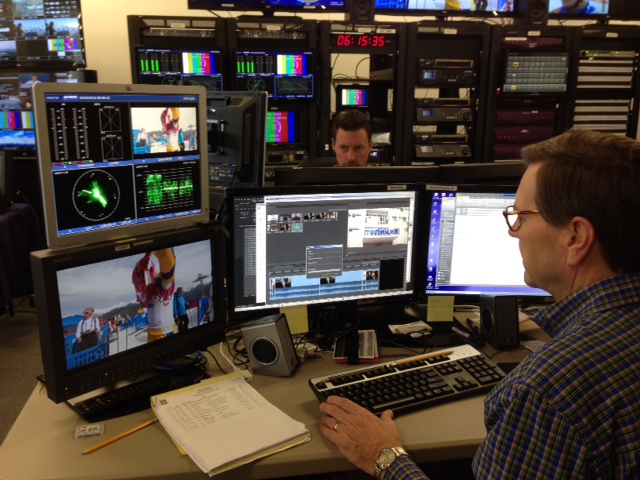
NBC News' David Jackson at an Adobe Prelude station. Why two ways to start the process? Xedio dispatcher preserves the original field timecode, important for multi-cam shoots, explained Jackson, while Prelude is faster and can handle a multitude of codecs and digital camera media. That clip or clips is then imported to a watch folder, where EVS Xsquare software picks it up and checks it into Interplay, creating low-res proxies which are available to all NBC News Interplay around the world.
“We export the files in to Xsquare, and then seemingly moments later, it’s usable in the Avid Interplay,” said Jackson. “And because of the way that the guys at EVS have engineered the Xsquare box, we can customize the destination folders inside of Interplay, because they’re using the Avid Interplay’s APIs.
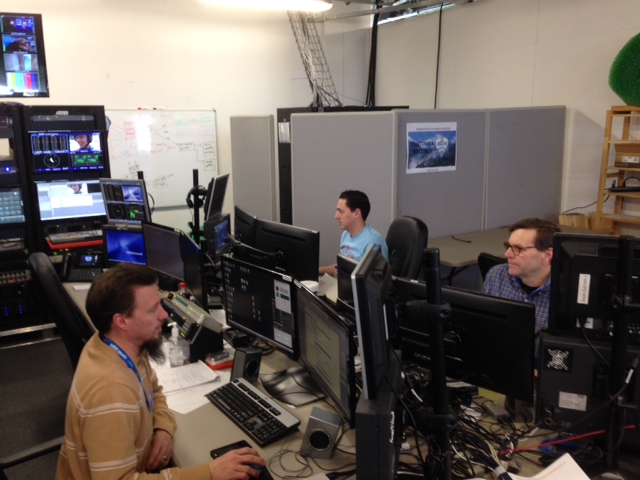
The ingest area “We’re able to customize it, and we’re able to target it,” said Jackson. In this case NBC news had three servers—one in Sochi for the local workgroup, one in London, and ‘Workgroup One’ in New York.
Each of these server groups has an Xsquare attached to it, and Aspera was used for moving files.
Jackson said content is checked in to Interplay faster than real-time, and play-while-capturing is possible. Producers and editors can see it coming in, and to them, it looks just like an incoming satellite feed, said Jackson.
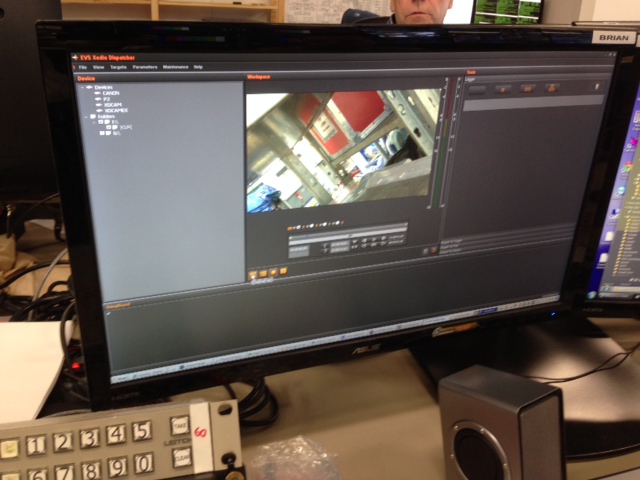
The Xedio Dispatcher interface
CULLING CONTENT
Jackson said NBC News knew needed a workflow that allowed better front end organization of digital media. “Every time a cameraman stops and starts a camera, no matter the manufacturer and no matter the camera, they make an individual file … you don’t want all those individual camera files to appear in an Avid editor’s bin. It would be too much; too difficult to organize. So this way we stitch it together, make sense out of it. We give a proper name, and then it shows up as a single asset. And, from an editor’s standpoint, it looks just like a piece of videotape.”
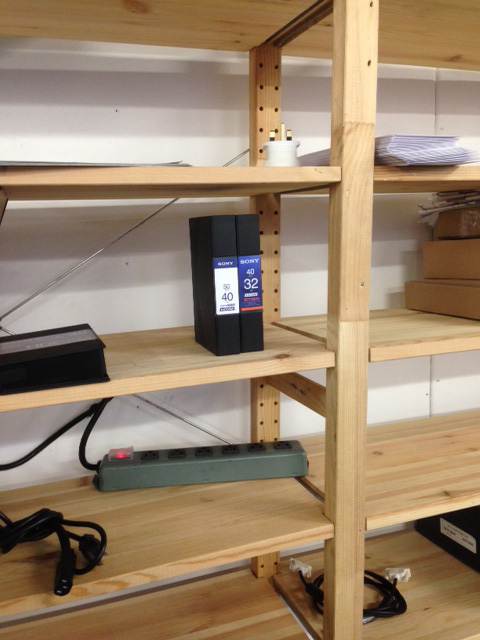
The NBC News tape library in Sochi. The content NBC News was taking in at Sochi was mostly compact flash cards from Nano recorders, which are set to XDCAM 50, along with a lot of DSLR and GoPro content. “We feel like we can take any digital media out there and get it to the CODEC that we require in our Avid, quickly,” said Jackson.
In past events like Sochi, NBC News shot a lot of videotape. In Sochi, the tape library was two tapes sitting on a shelf.
“This is the first major assignment that NBC News has taken on where videotape has taken a backseat to digital media,” said Jackson, who added that a real benefit of this workflow was the fact that it allowed the team to do most editing at home.
At the London 2012 Games NBC News had nine editors, eight edit rooms and most work was done onsite, the capture and ingest. Satellite feeds were going in and out. It was an enormous project that had to be built for a six week assignment.
Jackson said the Sochi workflow experience would likely engender changes moving forward, at home and in locations all over the world.
Get the TV Tech Newsletter
The professional video industry's #1 source for news, trends and product and tech information. Sign up below.

